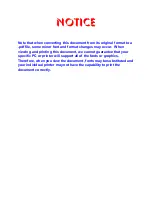
Safety and regulatory guide 9
interference, including interference that may cause its undesired
operation.
FCC Caution
: Any changes or modifications not expressly
approved by the party responsible for compliance could void the
user’s authority to operate this equipment.
This device complies with Part 15 of the FCC Rules. Operation is
subject to the following two conditions: (1) This device may not
cause harmful interference, and (2) this device must accept any
interference received, including interference that may cause
undesired operation.
Exposure to Radio Frequency Energy
Your wireless device has an internal antenna that emits radio
frequency (RF) energy. Human exposure to RF energy has been
and continues to be the subject of scientific research. According to
the U.S. Food and Drug Administration (FDA), “the weight of
scientific evidence has not linked cell phones with any health
problems.” You can access this FDA publication and other
information on human exposure to RF energy at:
U.S. Food and Drug Administration:
http://www.fda.gov/Radiation-EmittingProducts/RadiationEmittingPr
oductsandProcedures/HomeBusinessandEntertainment/CellPhones/u
cm116282.htm
Federal Communications Commission:
http://www.fcc.gov/encyclopedia/radio-frequency-safety
NIH National Institute of Environmental Health Sciences:
http://www.niehs.nih.gov/health/topics/agents/cellphones/
Health Canada:
http://www.hc-sc.gc.ca/hl-vs/iyh-vsv/prod/cell-eng.php
World Health Organization:
http://www.who.int/mediacentre/factsheets/fs193/en/
IEEE Committee on Man and Radiation:
http://ewh.ieee.org/soc/embs/comar/
International Commission on Non-Ionizing Radiation Protection:
http://www.icnirp.de/
Specific Absorption Rate (SAR) Testing
Your device has been designed to comply with applicable limits for
RF exposure. These limits use a unit of measurement called
Specific Absorption Rate, or SAR, which refers to the rate at which
the body absorbs RF energy. The Federal Communications
Commission (FCC) has established a SAR limit for mobile phones










































